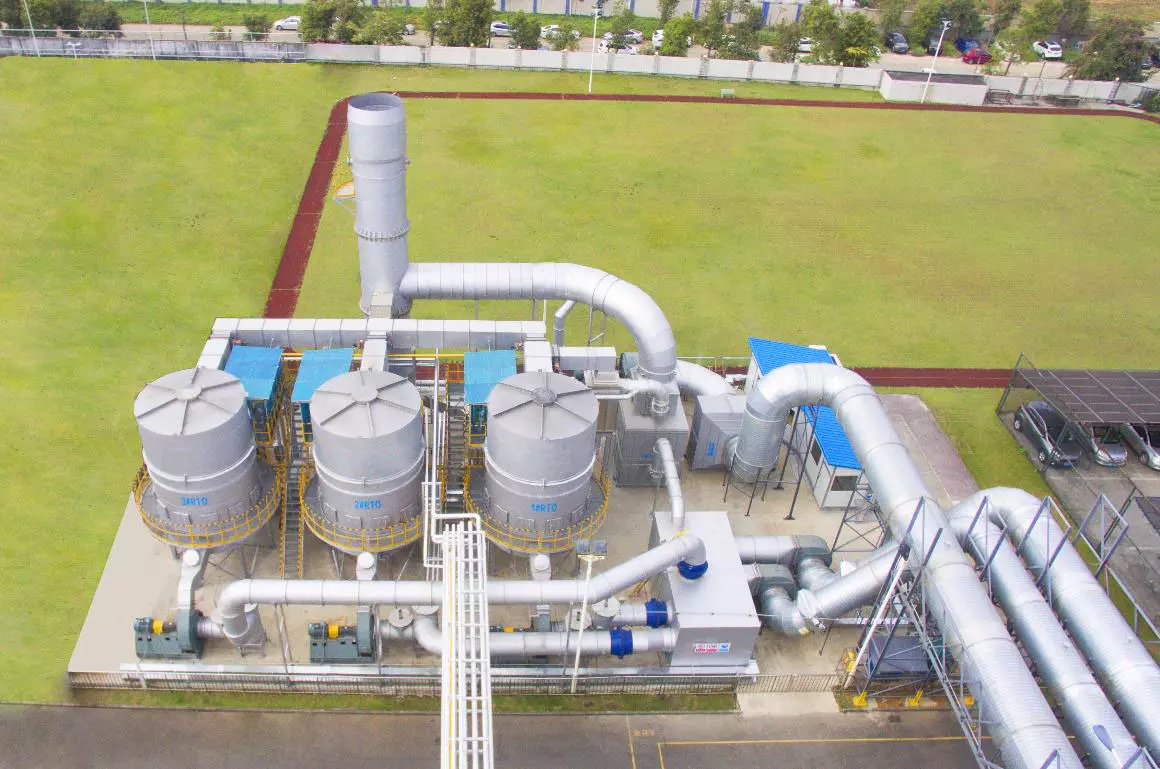What is the efficiency of a recuperative thermal oxidizer?
A recuperative thermal oxidizer is an effective air pollution control technology used to treat volatile organic compounds (VOCs), hazardous air pollutants (HAPs), and other hazardous air emissions from industrial processes. The efficiency of a recuperative thermal oxidizer is determined by various factors such as the type of oxidizer, temperature, residence time, and the concentration of pollutants in the process gas stream.
Type of Recuperative Thermal Oxidizers
- Direct-fired recuperative thermal oxidizer: This type of oxidizer uses a burner to heat the process gas stream, which is then passed through a heat exchanger to recover heat. These types of oxidizers are typically used for high concentration VOCs and HAPs.
- Indirect-fired recuperative thermal oxidizer: This type of oxidizer uses a separate heat source to heat the process gas stream, which is then passed through a heat exchanger. Indirect-fired recuperative thermal oxidizers are used for low concentration VOCs and HAPs.
- Regenerative thermal oxidizer: This type of oxidizer uses a ceramic heat exchanger to preheat the incoming process gas stream, which is then passed through a burner and then through another heat exchanger to recover heat. These types of oxidizers are commonly used for both high and low concentration VOCs and HAPs.
Temperature
The efficiency of a recuperative thermal oxidizer is directly affected by the temperature of the process gas stream. Typically, the higher the temperature, the better the efficiency. Most oxidizers operate at temperatures between 1400¡ãF and 1800¡ãF, depending on the type of oxidizer and the pollutants being treated. Higher temperatures can increase the efficiency of the oxidizer, but they can also increase operating costs due to increased fuel consumption and maintenance requirements.
Residence Time
The residence time of the process gas stream in the oxidizer also affects the efficiency of the system. The longer the residence time, the better the efficiency. Most oxidizers require a residence time of at least 0.5 seconds for effective treatment of pollutants. Some oxidizers may require longer residence times, depending on the type of pollutants being treated.
Concentration of Pollutants
The concentration of pollutants in the process gas stream also affects the efficiency of a recuperative thermal oxidizer. The higher the concentration of pollutants, the better the efficiency. However, high concentrations of pollutants can also lead to increased operating costs due to the need for higher temperatures and longer residence times. Most oxidizers are designed to handle a wide range of pollutant concentrations, from low to high.
In conclusion, the efficiency of a recuperative thermal oxidizer is determined by various factors such as the type of oxidizer, temperature, residence time, and the concentration of pollutants in the process gas stream. To ensure maximum efficiency, it is important to select the appropriate type of oxidizer for the specific pollutants being treated and to optimize the temperature and residence time of the system.
 Recuperative Thermal Oxidizer” />
Recuperative Thermal Oxidizer” />
公司簡介
We are a high-tech enterprise specializing in comprehensive treatment of volatile organic compound (VOC) emissions and carbon reduction energy-saving technology. Our company focuses on the manufacturing of advanced equipment and possesses four core technologies: thermal energy, combustion, sealing, and self-control. We have the capability for temperature field simulation, airflow field simulation modeling, ceramic heat storage material performance evaluation, molecular sieve adsorption material selection, and VOC high-temperature incineration and oxidation testing.
Team Strength
With a research and development center for RTO technology and a waste gas carbon reduction engineering technology center in Xi’an, as well as a 30,000 square meter production base in Yangling, we are a leading manufacturer in terms of global RTO equipment and molecular sieve rotary equipment. Our core technical team comes from the Aerospace Liquid Rocket Engine Research Institute (Aerospace Sixth Academy). We currently have more than 360 employees, including over 60 R&D technical backbone members, 3 senior engineers of professorship level, 6 senior engineers, and 99 thermodynamics doctors.
核心產品
Our core products include the Rotary Valve Regenerative Thermal Oxidizer (RTO) and molecular sieve adsorption concentration rotor. With our expertise in environmental protection and thermal energy system engineering, we can provide customers with integrated solutions for comprehensive industrial waste gas treatment, carbon reduction, and thermal energy utilization under various operating conditions.

認證、專利和榮譽
- 智慧財產權管理系統認證
- 品質管理系統認證
- 環境管理系統認證
- 建築業企業資質
- 高新技術企業
- Patents for Rotary Valve Regenerative Thermal Oxidizer
- Patents for Rotary Heat Storage Incineration Equipment
- Patents for Disc Molecular Sieve Rotor
選擇合適的 RTO 設備
When selecting suitable RTO equipment, it is important to consider the following:
- 確定廢氣的特性
- 了解當地法規和排放標準
- 評估能源效率
- 考慮維
- 進行預算和成本分析
- 選擇適當的 RTO 類型
- 考慮環境和安全因素
- 執行效能測試和驗證

服務流程
- Consultation and assessment:
- Initial consultation
- On-site inspection
- Needs analysis
- Design and solution development:
- Design proposal
- Simulation and modeling
- Proposal review
- Production and manufacturing:
- Customized production
- Quality control
- Factory testing
- Installation and commissioning:
- On-site installation
- Commissioning and operation
- Training services
- After-sales support:
- Regular maintenance
- Technical support
- Spare parts supply
We are a one-stop solution provider with a professional team dedicated to tailoring RTO solutions for our customers.
作者:米婭
